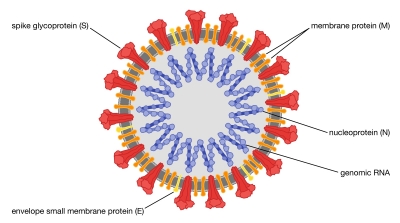
Coronaviruses are unsegmented single-stranded RNA viruses ranging from 26 to 32 kilobases in length, belonging to the subfamily Coronavirinae of the family Coronaviridae of the order Nidovirales.
In December 2019, 27 patients out of the 41 people admitted to hospitals due to mysterious lung disease, passed through a wet market in Wuhan City. Though the origin of the virus has been traced to the market, the very first human case identified did not go to the market often. Instead, based on SARS-CoV-2 genomic sequences, the first case can be traced back to November 2019.
In a study conducted by Canadian scientists, they sequenced nearly 30,000-base genome of the SARS-associated coronavirus, called the Tor2 isolate. They found that the novel coronavirus, SARS-CoV-2, is only moderately associated with other known coronaviruses, such as the OC43 and the 229E.
Further, the researchers found that SARS-CoV-2 belongs to the group of Betacoronaviruses, which are similar to the SARS-CoV from 2002. During that time, it was found that bats of the genus Rhinolophus were the reservoir of the virus. It was also revealed that a palm civet, a long-bodied, short-legged cat-like carnivore of the family Viverridae, was the intermediate host of the virus before it jumped to humans. In 2012, the MERS-CoV also jumped to humans through dromedary camels.
Picture Credit : Google

